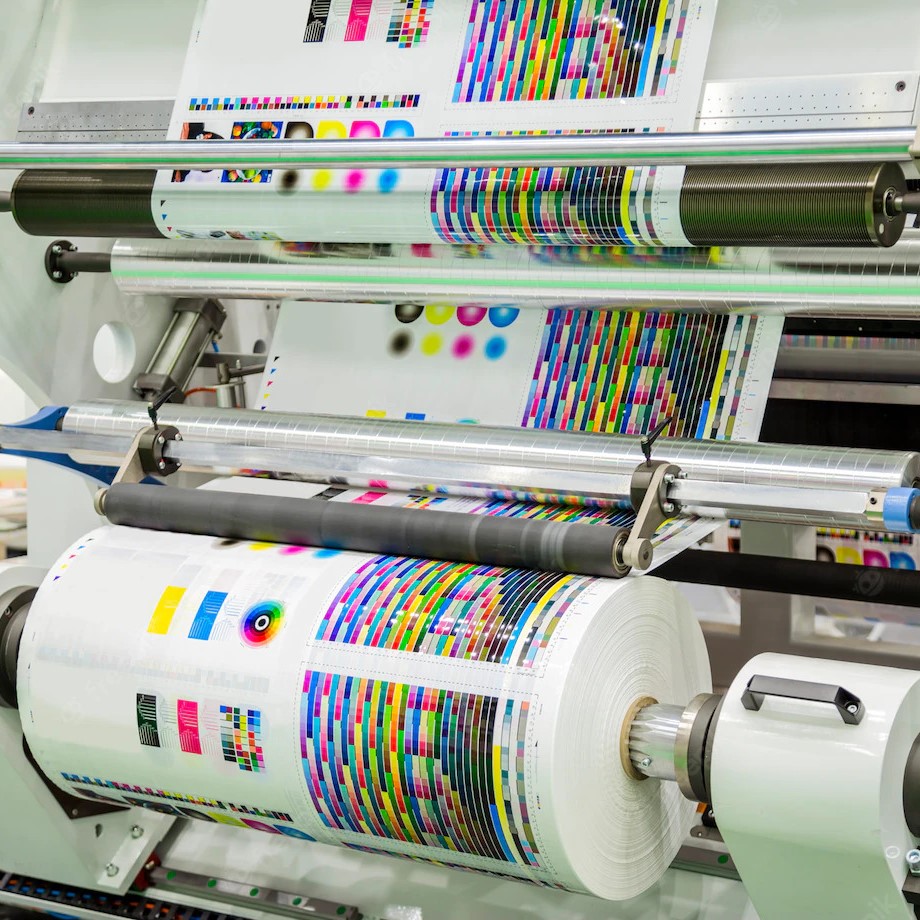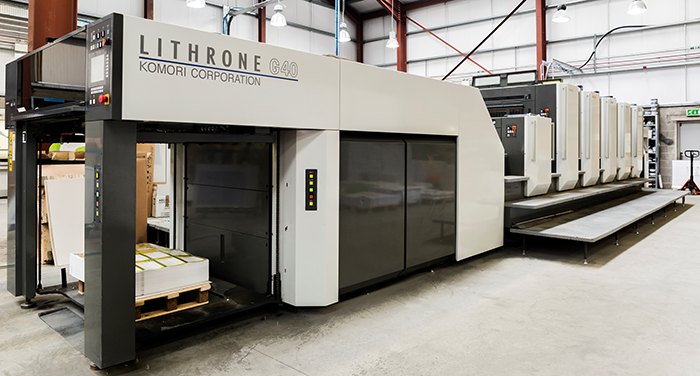The Crucial Guide to Understanding Litho Printing and Its Applications
Litho printing stands as a substantial technique in the printing sector, rooted in the principles of oil and water repulsion. This strategy not just provides top quality photos yet additionally caters to numerous business needs. Its applications range from advertising materials to packaging, showcasing its versatility. As the industry adapts to new modern technologies, the advancement of litho printing raises concerns regarding its future and importance in an electronic landscape. What lies ahead for this withstanding method?

What Is Litho Printing?
Litho printing, an extensively used printing technique, relies upon the concept of oil and water repulsion. This approach employs a level printing surface, commonly a steel plate, which is treated to ensure that the photo areas are receptive to oil-based inks while the non-image areas repel them. The process begins with the development of a picture on home plate, commonly via illustration or photographic methods. When the image is prepared, home plate is moistened with water, complied with by the application of ink. The ink adheres just to the picture locations, enabling specific reproduction of graphics and text. Litho printing is preferred for its capacity to create high-grade prints with fine detail and dynamic colors. It is commonly used in business applications, consisting of newspapers, magazines, and product packaging, showcasing its versatility and efficiency in fulfilling the needs of contemporary printing.
The History of Lithography
Although lithography is a modern printing staple, its beginnings map back to the late 18th century when German dramatist Alois Senefelder created the technique in 1796. Created as a technique for reproducing messages and images, lithography used a flat stone surface to develop prints with a chemical process. Senefelder's technology enabled better versatility and imaginative expression compared to previous printing methods.By the 19th century, lithography got widespread approval, becoming a prominent selection among musicians and authors. It enabled the mass manufacturing of pictures, maps, and posters, especially impacting the printing market. The strategy even more progressed with the intro of lithographic presses, enhancing effectiveness and quality.As the commercial transformation advanced, lithography adjusted to meet the demands of industrial printing, leading the way for modern applications. Today, it continues to be a vital strategy in numerous sectors, including publishing, product packaging, and art recreation.
Just How Litho Printing Works
A vital attribute of litho printing is its dependence on the principle of oil and water repulsion - litho printing. In this process, photos are transferred from a flat surface, normally a steel or polymer plate, to paper. Home plate is dealt with to make sure that the locations planned for printing bring in ink, while the non-image locations repel it due to their affinity for water. The printing begins by dampening home plate with water, which sticks to the non-image locations. Ultimately, an oil-based ink is used, sticking just to the desired image areas.When home plate enters call with the substratum, the ink is moved, producing a print. The litho printing process is capable of producing premium pictures with fine detail. It is often made use of for mass manufacturing as a result of its effectiveness and consistency, making it a preferred approach for business printing applications
Advantages of Litho Printing
One notable advantage of litho printing is its ability to generate top notch images continually, making it a suitable choice for business tasks. This printing technique utilizes a flat printing plate, ensuring also ink distribution and sharp details. Litho printing is additionally renowned for its color precision, enabling lively and true-to-life reproductions, which is crucial for branding materials.Moreover, it sustains a wide array of substrates, consisting of paper, cardboard, and also certain plastics, improving its convenience. The process is economical for big runs, as economies of range lower per-unit costs. Furthermore, litho printing has a fast turn-around time, enabling effective manufacturing schedules.Its toughness also implies that published products stand up to fading, ensuring that the end product preserves its visual allure over time. In general, these advantages make litho printing a favored selection throughout numerous sectors, contributing to its enduring appeal.
Applications of Litho Printing in Service
As organizations increasingly look for reputable and top quality printing options, litho printing becomes a vital gamer in numerous applications. This technique is particularly preferred for producing advertising and marketing materials such as sales brochures, leaflets, and brochures, many thanks to its capability to supply Get the facts lively shades and sharp photos. In enhancement, litho printing is regularly employed for packaging solutions, permitting companies to produce captivating tags and boxes that improve product appeal.In the sector of company identification, litho printing contributes in creating see this here professional stationery, business cards, and advertising goods, which help strengthen brand recognition. It is widely made use of in the publishing industry for published products such as books and publications, where constant top quality is vital. In general, litho printing's versatility and performance make it a necessary tool for organizations aiming to connect efficiently and develop a strong market existence.
Artistic Use Litho Printing
Litho printing functions as a functional medium in the domain name of printmaking, offering musicians a distinct approach to express their imagination. This technique permits a wide variety of imaginative applications, from traditional prints to contemporary analyses. By exploring the nuances of litho printing, artists can harness its distinctive qualities to enhance their job.

Printmaking Techniques Review
The artistry of printmaking encompasses a diverse variety of methods, with litho printing attracting attention for its unique approach to photo production. This approach counts on the concept of oil and water repulsion, enabling artists to draw directly onto a limestone or metal plate with an oily tool. When prepared, the plate is moistened and tattooed, moving the picture onto paper through stress. Litho printing is commemorated for its capability to produce great information and rich tonal variations, making it a popular selection among artists. Additionally, the process is functional, fitting both conventional techniques and modern-day adjustments. This adaptability permits litho printing to bridge different artistic styles, enriching the printmaking landscape with its distinct features and abilities.
Unique Artistic Applications
Discovering the distinct artistic applications of litho printing discloses its amazing versatility in numerous imaginative fields. Musicians utilize litho printing to develop elaborate layouts and textures, permitting for expressive and thorough jobs. The procedure assists in the reproduction of brilliant shades, making it suitable for illustrations and great art prints. Many modern musicians embrace lithography for its capacity to integrate standard techniques with modern concepts, leading to innovative artwork. Additionally, litho printing is usually utilized in the manufacturing of restricted version prints, enhancing their value and appeal. The tactile high quality of litho prints includes a distinct dimension, drawing in enthusiasts and art enthusiasts alike. In general, litho printing stays a significant tool for imaginative expression, linking classic methods with contemporary imagination.
The Future of Litho Printing in a Digital World
As the printing market advances, litho printing encounters the obstacle of integrating digital innovations to stay appropriate. Methods concentrated on electronic assimilation, along with fads in sustainability navigate to this site and technology, will certainly form its future - litho printing. Understanding these characteristics is important for industry stakeholders looking to adapt to a swiftly transforming landscape
Digital Assimilation Approaches
An expanding variety of litho printing business are embracing digital integration strategies to remain affordable in a significantly digital landscape. By incorporating digital operations, these firms can enhance processes and enhance performance. This combination enables real-time data monitoring and enhanced interaction in between divisions, lowering turn-around times noticeably. Furthermore, electronic devices enable far better personalization and personalization of printed products, catering to specific client demands. Firms are also taking on hybrid printing remedies that integrate typical litho methods with electronic innovations, offering adaptability in production. Leveraging information analytics helps in recognizing market trends and client choices, allowing organizations to make informed choices. On the whole, digital combination is coming to be important for litho printing firms intending to innovate and reply to progressing market needs.
Sustainability and Innovation Fads

Regularly Asked Questions
What Products Are Frequently Utilized in Litho Printing?
The materials generally utilized in litho printing consist of aluminum plates, ink, water, and paper. Each part plays a necessary role in the printing procedure, ensuring top notch image reproduction and reliable transfer of ink onto the substrate.
Exactly How Does Litho Printing Contrast to Digital Printing?
Litho printing provides premium color consistency and high quality for huge runs, while digital printing masters short runs and personalization. Each approach has distinct advantages, accommodating various demands based on production scale and cost-efficiency.
What Is the Regular Turn-around Time for Litho Printing Projects?
The regular turnaround time for litho printing projects varies, normally varying from a couple of days to numerous weeks. Factors influencing this timeframe include job intricacy, quantity, and required completing procedures, affecting total manufacturing timetables.
Can Litho Printing Accommodate Custom-made Sizes and Formats?
Litho printing can certainly fit custom-made sizes and styles, permitting for adaptability in layout. This flexibility makes it possible for customers to attain one-of-a-kind print end results customized to their certain requirements, boosting the total performance of their tasks.
What Are the Ecological Effects of Litho Printing?
The environmental impacts of litho printing include source intake, chemical use, and waste generation. Nevertheless, developments in sustainable methods and environmentally friendly materials are slowly decreasing these negative effects, advertising a much more environmentally liable strategy to printing.